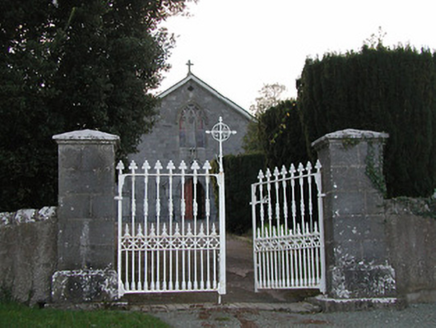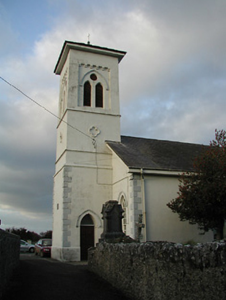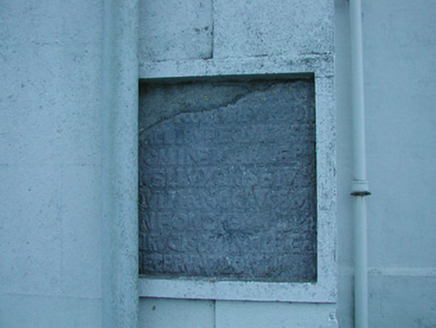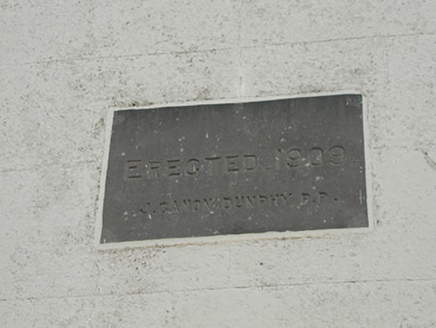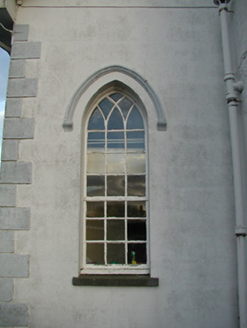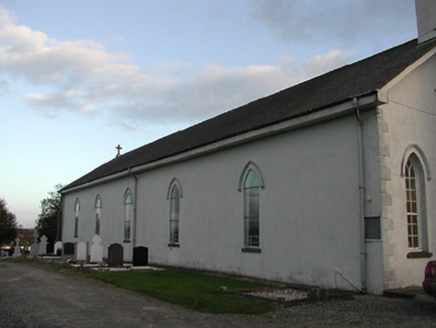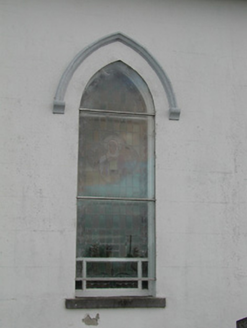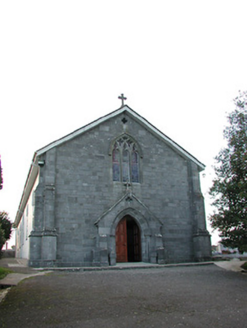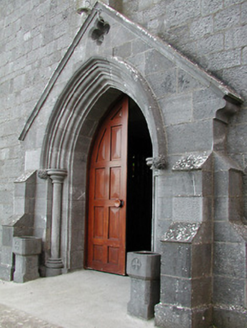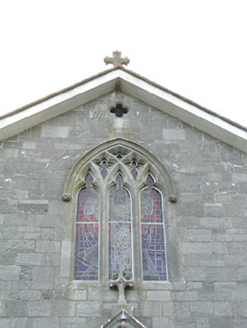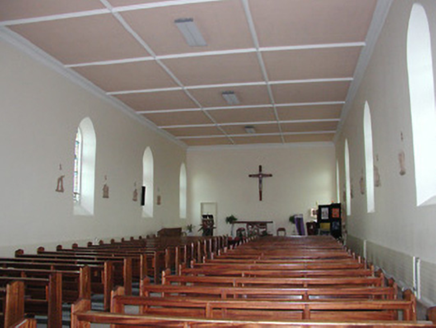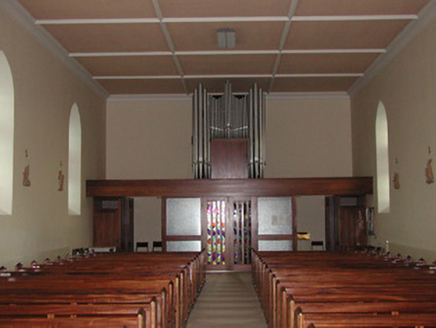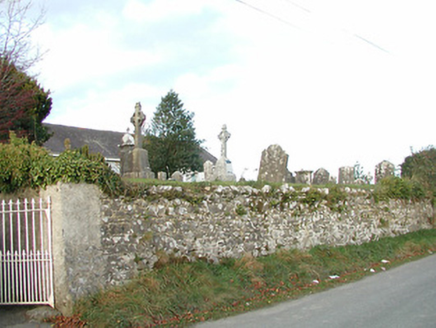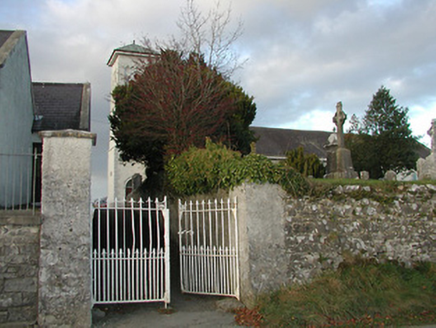Survey Data
Reg No
12402305
Rating
Regional
Categories of Special Interest
Archaeological, Architectural, Artistic, Historical, Social
Original Use
Church/chapel
In Use As
Church/chapel
Date
1825 - 1830
Coordinates
246945, 150071
Date Recorded
10/11/2004
Date Updated
--/--/--
Description
Detached five-bay double-height single-cell Catholic church, built 1826, on a rectangular plan; single-bay three-stage tower (west) on a square plan. "Improved", 1909, producing present composition. Renovated, ----, with interior reordered. Replacement pitched slate roof with ridge tiles, and cast aluminium rainwater goods on box eaves. Repointed tooled cut-limestone wall (east) on tooled cut-limestone plinth with abbreviated margined tooled cut-limestone clasping stepped buttresses to corners having lichen-spotted cut-limestone "slated" coping; rendered, ruled and lined walls (remainder) with rendered quoins to corners. Lancet window openings with cut-limestone sills, and concealed dressings with hood mouldings on ogee label stops framing storm glazing over fixed-pane fittings having leaded stained glass margins centred on leaded stained glass quatrefoils. Lancet window openings (west) with cut-limestone sills, and concealed dressings with hood mouldings on ogee label stops framing nine-over-nine timber sash windows without horns having interlocking Y-tracery glazing bars. Pointed-arch door opening (east) with poured concrete ramp, margined tooled cut-limestone doorcase having colonette-detailed reveals with hood moulding on foliate label stops framing timber panelled double doors. Pointed-arch window opening (gable) with cut-limestone interlocking Y-mullions, margined tooled cut-limestone surround having chamfered reveals with hood moulding on foliate label stops framing fixed-pane fittings having leaded stained glass panels. Full-height interior reordered, ----. Set in landscaped grounds with limestone ashlar piers to perimeter having "Cavetto"-detailed shallow pyramidal capping supporting crocketed cast-iron double gates.
Appraisal
A church erected under the aegis of Reverend Edmond Kavanagh (d. 1857) representing an integral component of the ecclesiastical heritage of County Kilkenny with the architectural value of the composition, one occupying a site adjacent to the ruins of a medieval church '[whose] walls were up twelve years ago when it was pulled down to build the [Roman Catholic] chapel with the materials' [Ordnance Survey Letters 1839 in O'Flanagan 1930 I, 269], suggested by such attributes as the elongated rectilinear "barn" plan form; and the slender profile of the openings underpinning a contemporary Georgian Gothic theme with those openings originally showing characteristic switch-track glazing patterns: meanwhile, aspects of the composition, in particular neo-medieval façade and the tower erected under the aegis of Reverend James Dunphy (d. 1930), clearly illustrate the continued "improvement" of the church into the early twentieth century. NOTE: John Hogan (d. 1885), contributing to "Transactions of the Ossory Archæological Society" (1883), remarks that 'most of our ancient churches preserve some memorial of their respective founders, patrons, or benefactors; and the old graveyard of Grange, though not a stone of its once venerable church now remains upon another, is enriched by two interesting memorials in stone of the once influential Comerfords of Ballybur. The first of these is part of the base of a memorial cross – a block of limes-stone, about two feet square – and worked into the masonry as a quoin in the north-west angle of the present parish chapel'. This repurposed stone survives and its incomplete dedication, in Latin, translates as "[Pray for the souls of] Richard Comerford of Ballybur [Knight] and of Mrs. Mary Purcell his wife who [both] had this cross erected in honour of the Holy Cross of Our Lord 20 July". Hogan remarks that 'the year of the erection is not on the stone…but an inscription on the tomb of this same Richard…enables us to fix the date of the erection of [the] cross at some period between his marriage with Madame Purcell and that of his death which took place in the year 1637' (Hogan in Transactions of the Ossory Archæological Society II (1883), 41-2).
